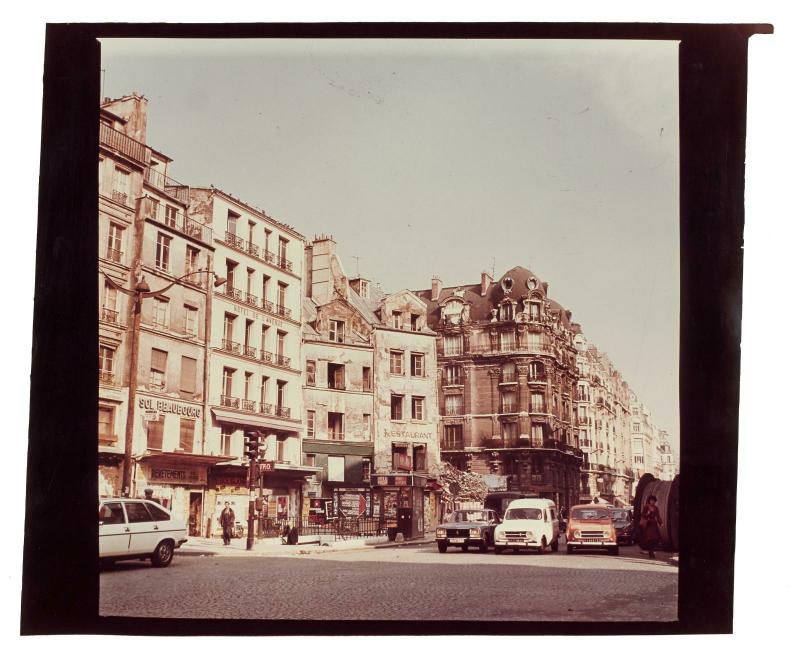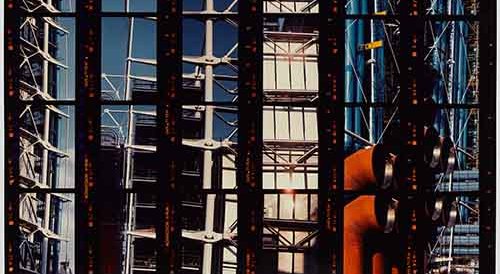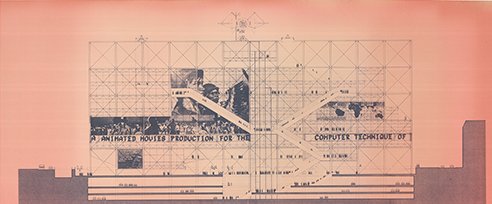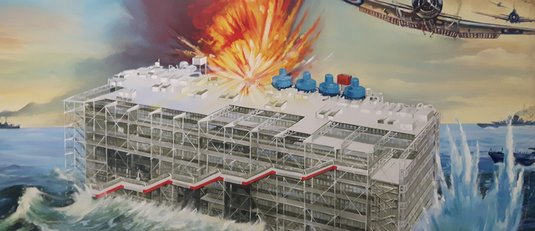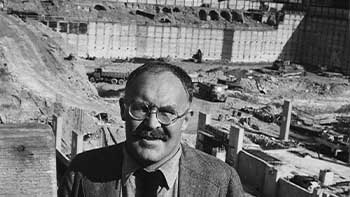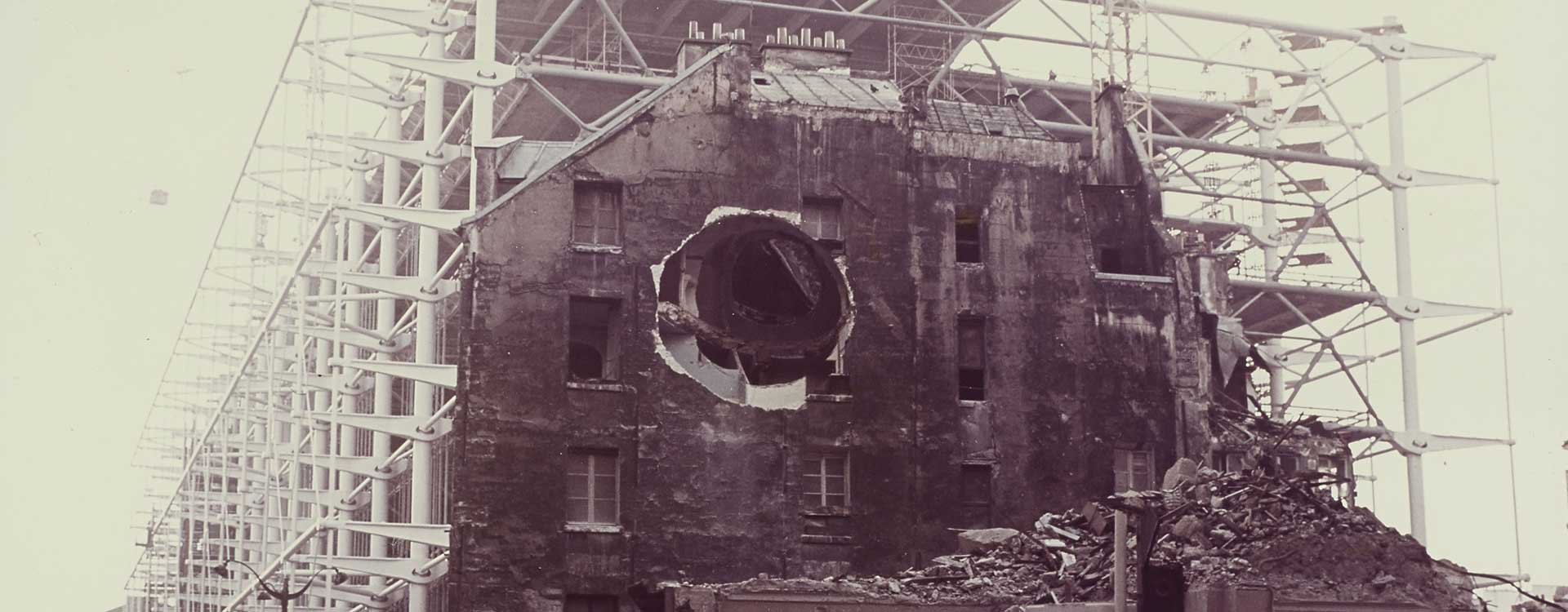
The day Gordon Matta-Clark wanted to break through the Centre Pompidou
September 1975. On rue Beaubourg, passers-by stop and stare. On the wall of a building due for demolition, a strange little hole has appeared. At first round, it gradually morphs, under the repeated blows of a sledgehammer, into a comma. And within a few days, it reveals a gaping void.
This is Conical Intersect, a work by American conceptual artist Gordon Matta-Clark, created as part of the Paris Biennale. A monumental cone carved through the walls and floors of adjoining buildings, the sculpture spirals inward: its widest opening facing the street, its pointed tip piercing the roof of the neighbouring house.
A monumental cone carved through the walls and floors of adjoining buildings, the sculpture spirals inward: its widest opening facing the street, its pointed tip piercing the roof of the neighbouring house.
Through this intervention, pedestrians catch fragmented glimpses of the skeletal frame of the future Centre Pompidou. According to Gerry Hovagimyan, who collaborated with Matta-Clark on the project, the play of light within the structure was inspired by Anthony McCall’s 1973 film Line Describing a Cone, which begins with a beam of light gradually tracing a cone in space.
Invited by Jean-Hubert Martin, then curator at the Musée National d’Art Moderne, Gordon Matta-Clark initially planned to cut into the structure of the Centre Georges Pompidou (as it was then called). When the project was declined, the artist turned his attention to two twin 17th-century buildings at 27 and 29 rue Beaubourg, both due to be demolished. At number 29 stood a café-restaurant run by the Pagès family, Au rendez-vous des routiers.
At the time, the neighbourhood was one vast construction site. The historic Parisian marketplace, Les Halles, had been demolished in 1973 and relocated to Rungis, leaving behind the now-infamous ‘hole’ (the Forum des Halles would open in 1979). Entire blocks were being razed—the area had been classified as “Unsanitary Zone No. 1” by authorities as early as the 1930s. The Châtelet–Les Halles RER station was still under construction. And on the Beaubourg plateau, the future Centre Georges Pompidou was beginning to take shape: the gerberettes—the distinctive steel cantilever beams—were being set into place.
A central figure of the 1970s New York art scene and a reader of Guy Debord, Gordon Matta-Clark studied architecture at the prestigious Cornell University before dedicating himself fully to art. Deeply rooted in social and historical concerns, his practice sits at the intersection of sculpture and architecture. Influenced in particular by land artist Robert Smithson, whom he met, Matta-Clark was driven by a desire to challenge and reframe the perception of the urban environment.
He created in situ works by performing cuttings—architectural incisions—both inside and outside buildings. Between 1972 and 1973, he worked in abandoned structures in New York’s South Bronx, then one of the city’s most impoverished neighbourhoods (New York would declare bankruptcy in 1975). This period gave rise to the Bronx Cuts and Bronx Floors series.
When you live in a city, everything, in a sense, is architecture.
Gordon Matta-Clark
Though most of his interventions were later demolished, records of his cuttings survive through photographs and film. The making of Conical Intersect was captured in a twenty-minute 16mm film, now held in the collection of the Musée National d’Art Moderne. The footage documents the final moments of the block at 27–29 rue Beaubourg, collapsing under the force of a demolition excavator (the district became known as ‘de l’Horloge’).
Just three years after this spectacular intervention, Gordon Matta-Clark died of cancer. He was thirty-five. ◼
Related articles
Gordon Matta-Clark, Conical Intersect (1975)
© Adagp, Paris
© Centre Pompidou
